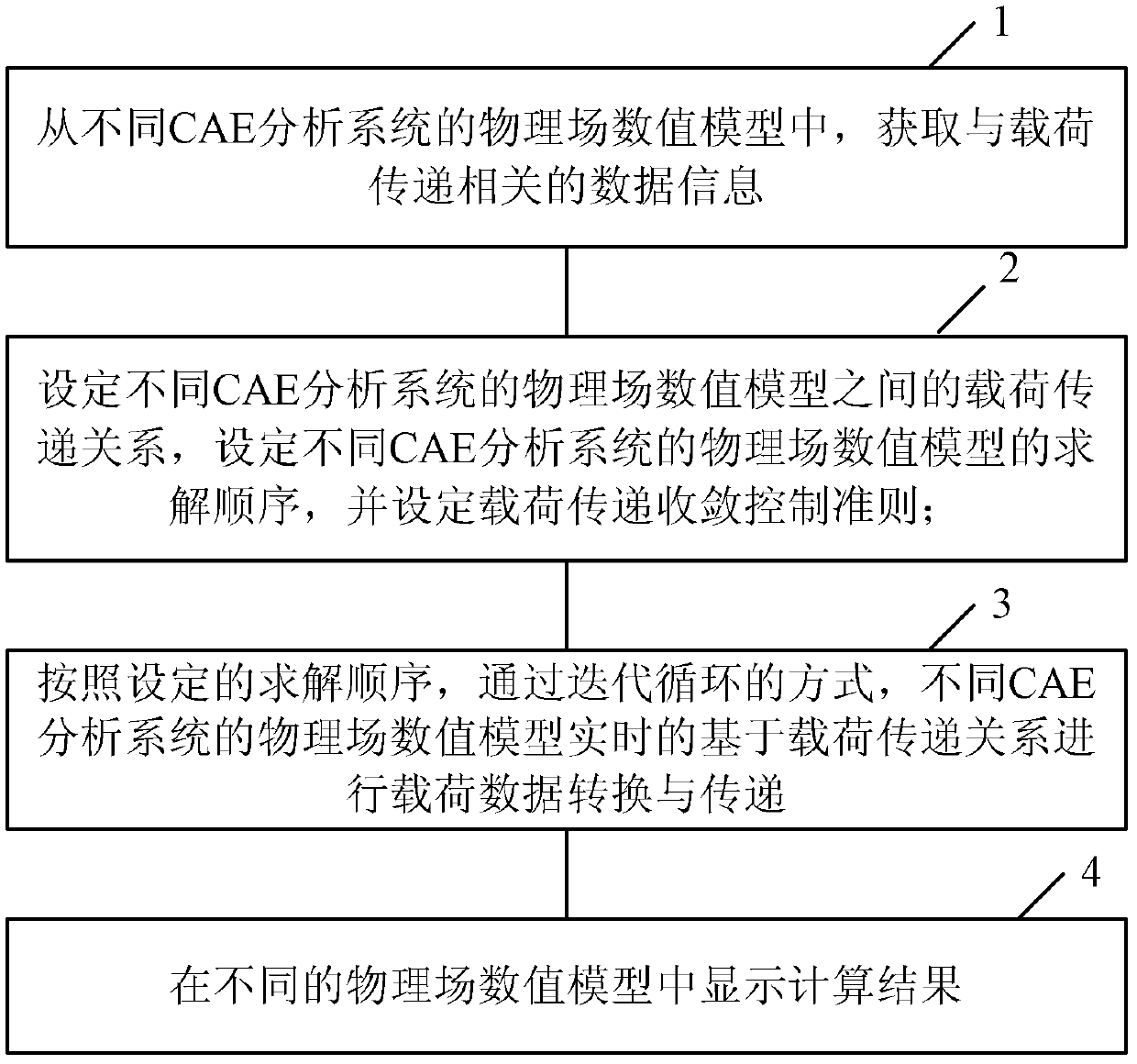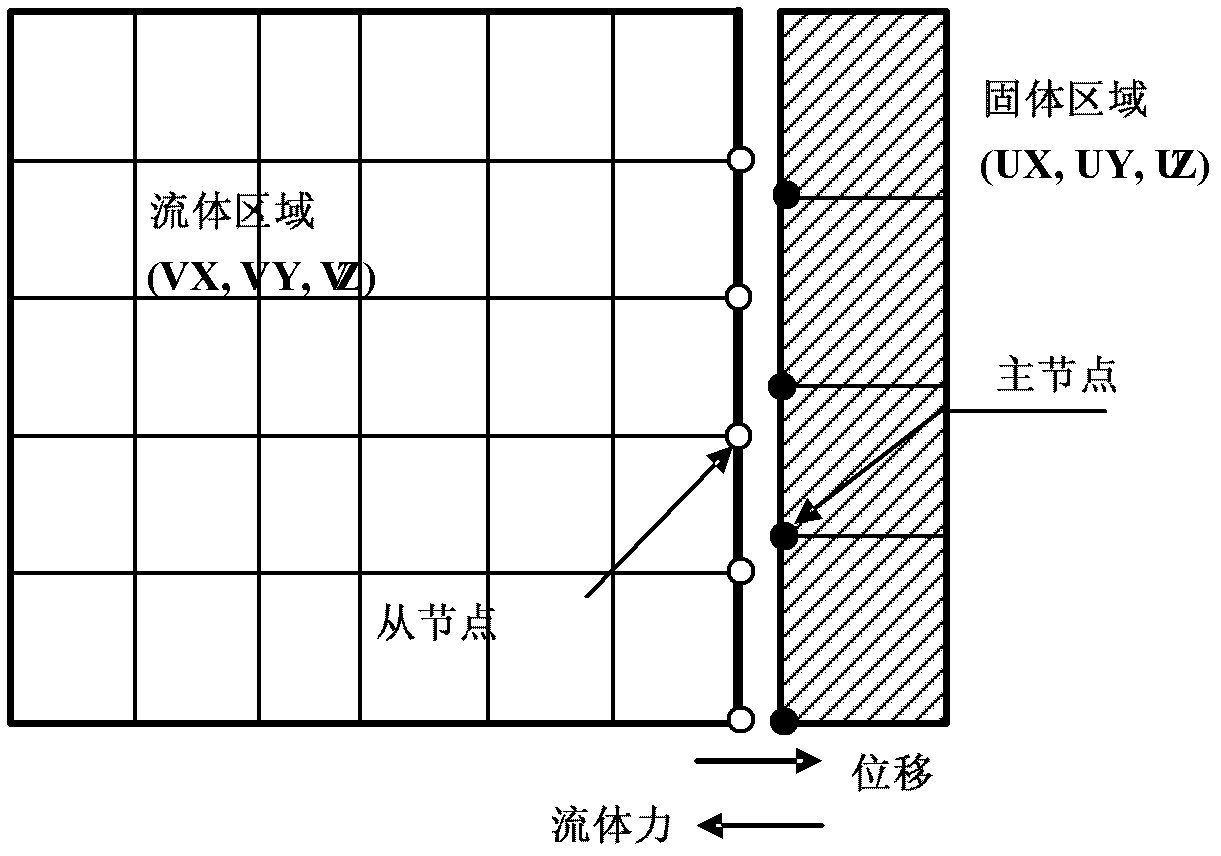Engineering multiphysics coupling analysis method
A multi-physics and coupling analysis technology, applied in the field of simulation, can solve problems such as poor condition number of the overall matrix, increase data acquisition and data storage functions, increase user difficulty and technical support burden, etc., so as to increase the cost of software use and save The effect of R&D costs
- Summary
- Abstract
- Description
- Claims
- Application Information
AI Technical Summary
Problems solved by technology
Method used
Image
Examples
Embodiment Construction
[0017] In order to make the object, technical solution and advantages of the present invention clearer, the present invention will be further described in detail below in conjunction with the accompanying drawings and embodiments.
[0018] Such as figure 1 As shown, the engineering multi-physics field coupling analysis method of the present invention comprises the following steps:
[0019] Step 1: Obtain data information related to load transfer from the physical field numerical models of different CAE analysis systems.
[0020] Step 2: Set the load transfer relationship between the physical field numerical models of different CAE analysis systems, set the solution sequence of the physical field numerical models of different CAE analysis systems, and set the load transfer convergence control criteria.
[0021] Step 3: According to the set solution sequence, the load data conversion and transfer are carried out in real time based on the load transfer relationship of the physic...
PUM
 Login to View More
Login to View More Abstract
Description
Claims
Application Information
 Login to View More
Login to View More - R&D
- Intellectual Property
- Life Sciences
- Materials
- Tech Scout
- Unparalleled Data Quality
- Higher Quality Content
- 60% Fewer Hallucinations
Browse by: Latest US Patents, China's latest patents, Technical Efficacy Thesaurus, Application Domain, Technology Topic, Popular Technical Reports.
© 2025 PatSnap. All rights reserved.Legal|Privacy policy|Modern Slavery Act Transparency Statement|Sitemap|About US| Contact US: help@patsnap.com



